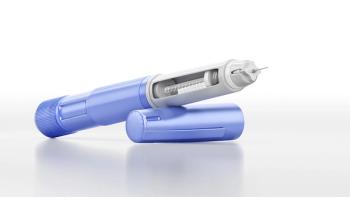
FDA Quality Metrics Offer Regulatory “Carrots” for Manufacturers
The broader aim of FDA's metrics initiative is to encourage quality manufacturing operations that will help avoid drug shortages.
Biopharmaceutical companies able to produce high quality drugs and biologics on a regular basis may merit less frequent plant inspections and reduced reporting of post-approval manufacturing changes, based on a set of quality metrics indicating high-performance processes and facilities. The broader aim of this FDA initiative is to encourage quality manufacturing operations that will help avoid drug shortages and enable the agency to use its inspection and oversight resources more efficiently by focusing on high-risk, problematic sites and situations.
The proposed set of quality metrics were issued July 28, 2015 by the Center for Drug Evaluation and Research (CDER) and Center for Biologics Evaluation and Research (CBER) in a long-anticipated
FDA will hold a public meeting Aug. 24, 2015 to discuss these metrics and additional measures that could further indicate the quality culture and process capability of a manufacturing operation, as described in a
At the meeting, FDA will seek input from manufacturers and other stakeholders on how well the draft guidance defines the proposed metrics; whether to also collect data from high-risk excipient producers and medical gas manufacturers; whether to add a “right-first-time” metric; what data standards might aid reporting; whether reporting should be segmented by site or by product; and whether data should be submitted annually, semiannually, or quarterly.
This initiative to develop quality metrics is a key component of the agency’s broader program for promoting quality manufacturing, as seen in establishment of CDER’s Office of Pharmaceutical Quality (OPQ) and reorganization of the FDA inspection field force. Most of the data in proposed metrics already are collected by manufacturers to document compliance with good manufacturing practices, noted Ashley Boam, acting director of the office of policy in OPQ. She observed at the April 2015 CMC workshop sponsored by the Drug Information Association that quality metrics will be just one factor used to schedule risk-based field inspections and should help identify factors leading to supply disruptions.
Manufacturers have provided extensive input on the quality metrics initiative, with an eye to avoiding specific process and product measures that would generate “report-card” listings and superficial comparisons. Industry experts are optimistic that FDA’s proposed list of metrics will produce objective measures that reflect realistic performance goals.
The International Society for Pharmaceutical Engineering (ISPE), the Parenteral Drug Association (PDA) and the Generic Pharmaceutical Association have been particularly active, holding meetings, issuing white papers, and evaluating potential proposals. ISPE is sponsoring a pilot program to test the feasibly of data collection and metrics reporting across 18 companies. PDA has recommended that metrics focus on trends for products and sites will continue work on benchmarks and standards for assessing how a strong quality culture can help companies achieve high quality drug products without extensive oversight.
In a recent “
Newsletter
Stay at the forefront of biopharmaceutical innovation—subscribe to BioPharm International for expert insights on drug development, manufacturing, compliance, and more.




